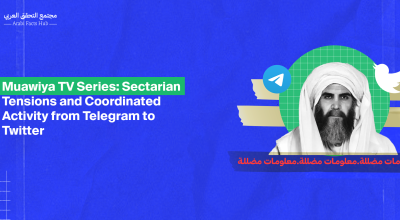The Madinaty Incident in Egypt: Fake accounts defend an officer accused of running over a family of five

This is part of a series of investigative reports published in collaboration with Daraj media
Arabi Facts Hub 05.07.2023.
Arabi Facts Hub has monitored a group of fake accounts on social media that were defending an Egyptian officer after video footage emerged documenting the officer’s running over a family of five with his car at the entrance of Madinaty, the suburban residential compound.
______________________________________________________________________________
The incident of a military officer running over an Egyptian family of five – a mother, father, and three children – in the Madinaty compound northeast of Cairo sparked widespread anger among Egyptians. The accused, a medical officer in the Egyptian Armed Forces, used his car to run over the mother, a pharmacist, who bled heavily, and her husband and three children who were all injured.
The brutality of the killing stirred public opinion in Egypt, especially since the perpetrator is a captain and doctor in the armed forces, adding a political dimension to the case. Egyptians on various social media platforms called for transparent investigations in which military authorities do not interfere, citing previous similar incidents in which the fates for the perpetrators who belonged to the military institution remained unknown.
The compound's security reached out to its residents to delete all posts related to the incident. There was 24 hours of security-forced blackout before the first video documenting the hit-and-run incident was released, serving as the sole evidence of the crime. Consequently, the official Facebook page of the military spokesperson announced the filing of a military criminal case in the Tagammu police department, accusing the officer of "intentional murder and attempted murder." He was detained pending investigation and later referred to the military criminal court.
The discussion extended across various social media platforms. The Egyptian regime’s electronic defense battalions centered their media campaign on a single message: the military police swiftly apprehended the suspect. They claimed that no one in Egypt is above the law, and state institutions do not show favoritism to any party. Was this interaction genuine?
مصر دولة قانون محترمة
— Loay Alkhteeb (@LoayAlkhteeb) July 4, 2023
معلومات مهمة وجديدة عن المتهم في #حادث_مدينتي pic.twitter.com/xj580JWq3v
Online discussions of the case on Twitter used the hashtag #Madinaty_case, facilitating the process of collecting and analyzing these tweets. We used the Netlytic tool, which allows researchers to extract data from Twitter. We collected a sample of around 10,000 tweets that used the hashtag in the past few days. The network revealed the presence of 4,028 accounts with 6,924 interactions among them, as shown in the following image.

The accounts interacted on three levels. The first level represents the core of the network and includes accounts that received high interactions. Reviewing these accounts indicates their prominence and genuine engagement, primarily focusing on criticizing the political system.
The second level consists of interconnected accounts, concentrated but distant from the core of the network. The third level contains scattered accounts in the outer circle of the network, with minimal interaction and little overlap with the rest of the network elements.
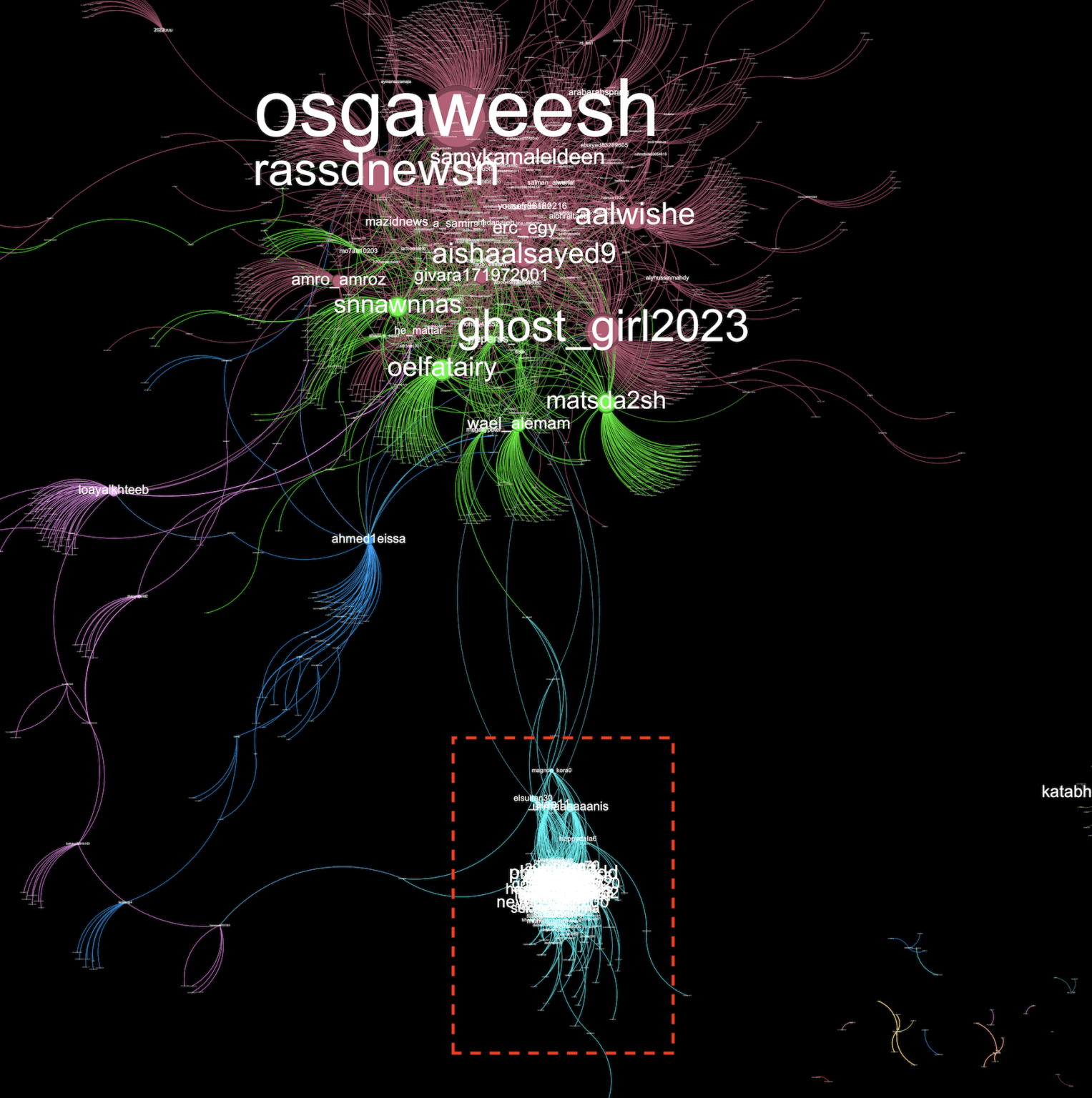
Our analysis of the network of accounts located away from the core revealed the existence of approximately 188 accounts, most of which were recently created. These accounts are managed to amplify a consistent media message aligned with the regime, emphasizing the idea that no one is above the law, and the state does not show favoritism towards anyone.
The modern network of electronic defense battalions
The network revealed the presence of closely aligned accounts engaging in mutual interactions without interfering with the discussions in the rest of the network. This pattern suggests a shared behavior within this network, indicating that they may be managed by the same group or individuals. To examine the network, it is necessary to isolate this network from the rest of the interactors and analyze it separately.
The modern network of electronic defense battalions refers to a recently formed network, consisting of accounts promoting the state media narrative. The network is composed of Twitter accounts arranged in circles, and the size of the circle reflects the level of interaction it has received, with a larger circle indicating higher engagement. Lines between the circles represent the relationships connecting them, whether through comments or retweets. The network does not show the presence of a central circle or a central account that receives interactions and retweets. On the contrary, most accounts have similar sizes, indicating homogeneous interaction in terms of tweeting and retweeting. This leads us to question the authenticity of the network and review the dates of its creation and the nature of its interactions.
Close Creation Dates
The network includes 188 accounts that had 2107 interactions between them. This network represents only about 5 percent of the total accounts in the sample, which are 4028 accounts. These accounts produced approximately 30 percent of the total interactions in the network, amounting to 6924.
The creation dates of the accounts indicate that 117 out of the 188 accounts were created on the 26th and 27th of April with a close time difference between each account.
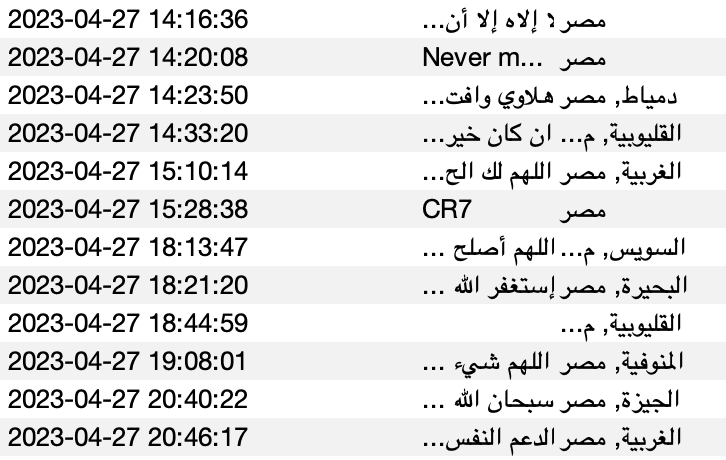
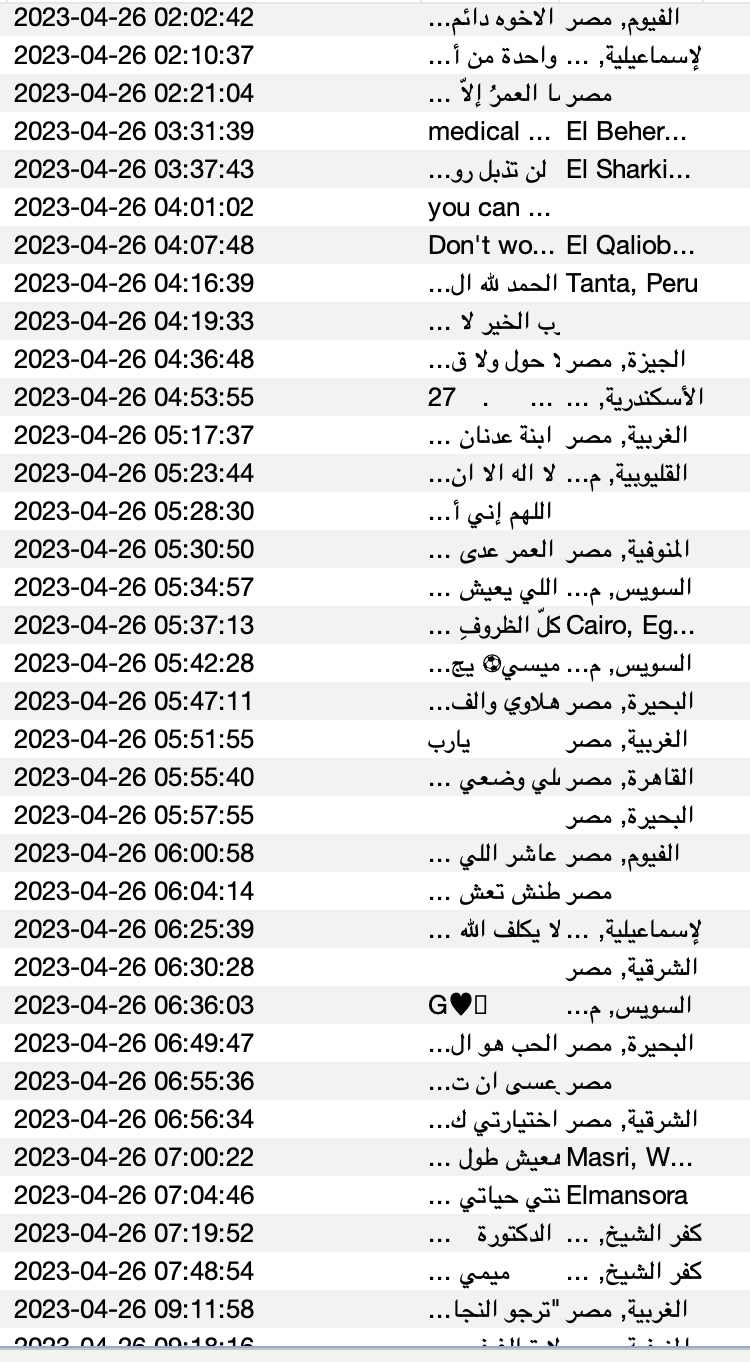


The examination of these accounts reveals common characteristics. They tweep expressing their confidence in the justice of the Egyptian system and the universality of the rule of law. They then proceed to retweet from the same network members who have written similar tweets.
For example, the account @sodohe1700, carrying the name Ibtisam Amer, wrote two tweets about the incident. One of the tweets received 7 retweets. Upon reviewing these accounts, it becomes apparent that they are all part of the network and have retweeted from Ibtisam while also writing tweets related to the matter from their own accounts.
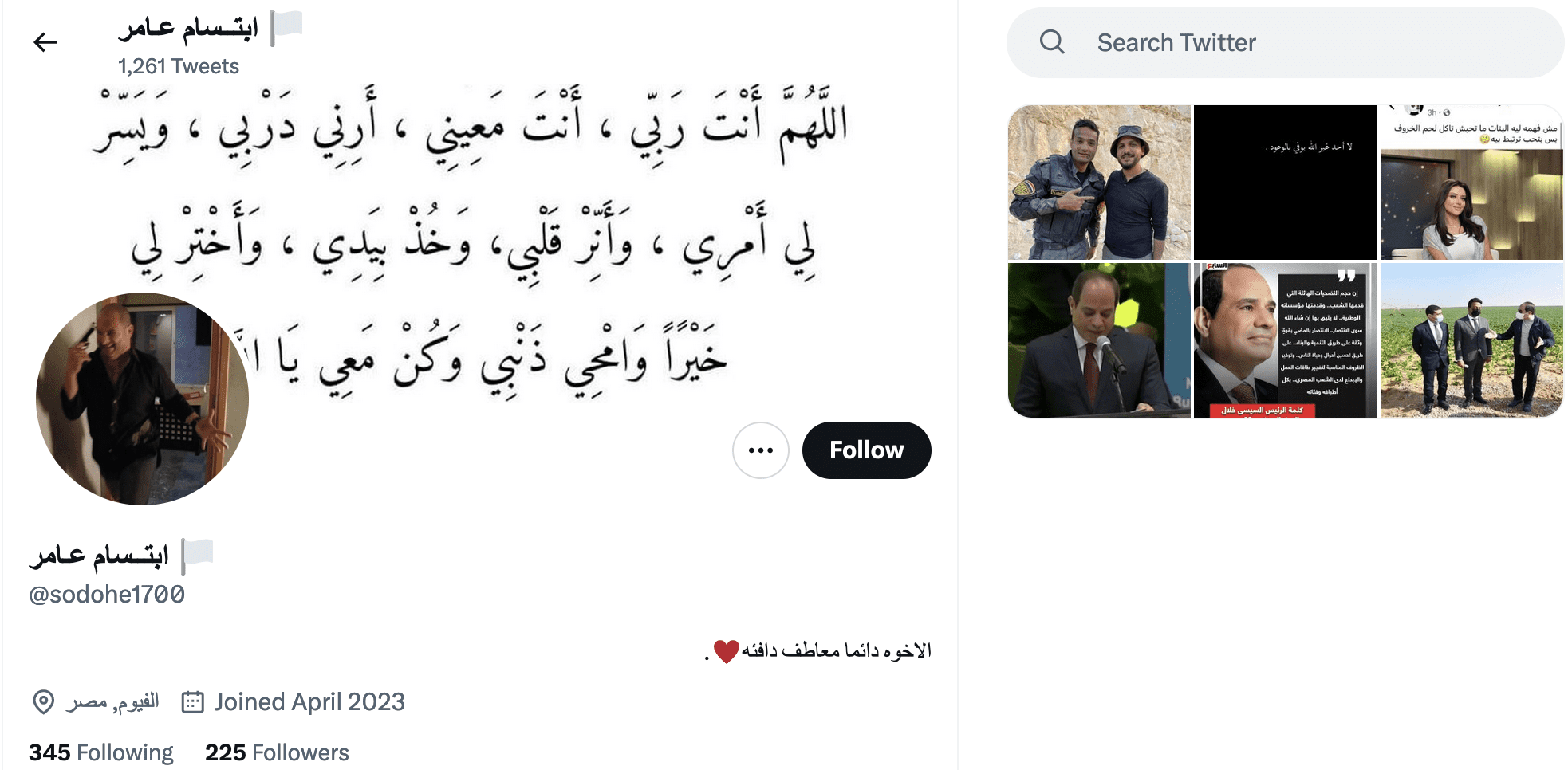
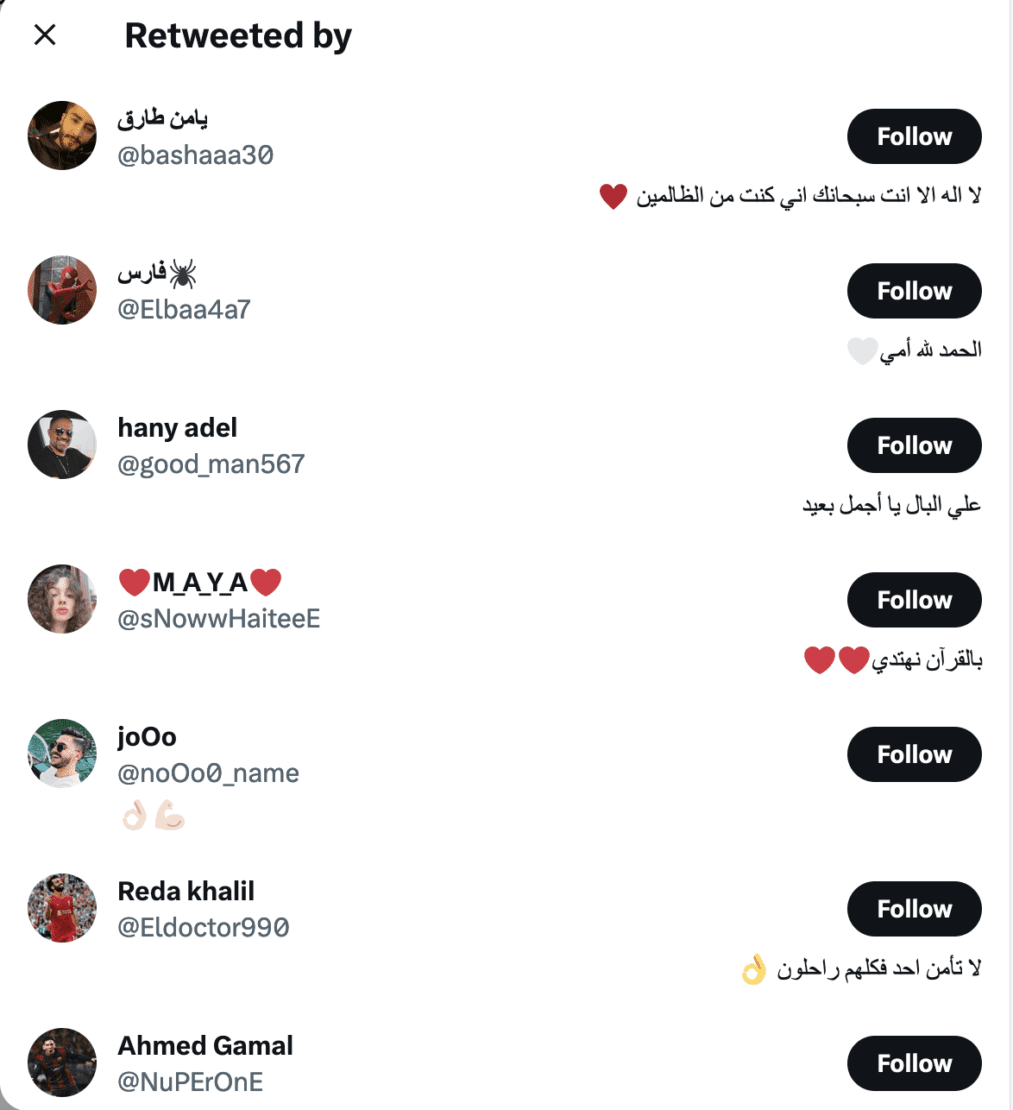

A group of accounts within the network retweeted what was written by (Ibtisam Amer), as seen in the following image:



The same scenario was repeated with the rest of the network accounts. For example, the account named Dr. Mahmoud Atiya (@elsultan30), which used the photo of a dentist named Dr. Hatem Al-Bitar as a profile picture. Mahmoud retweeted 26 times from other accounts within the network and wrote two tweets containing the same media messages.
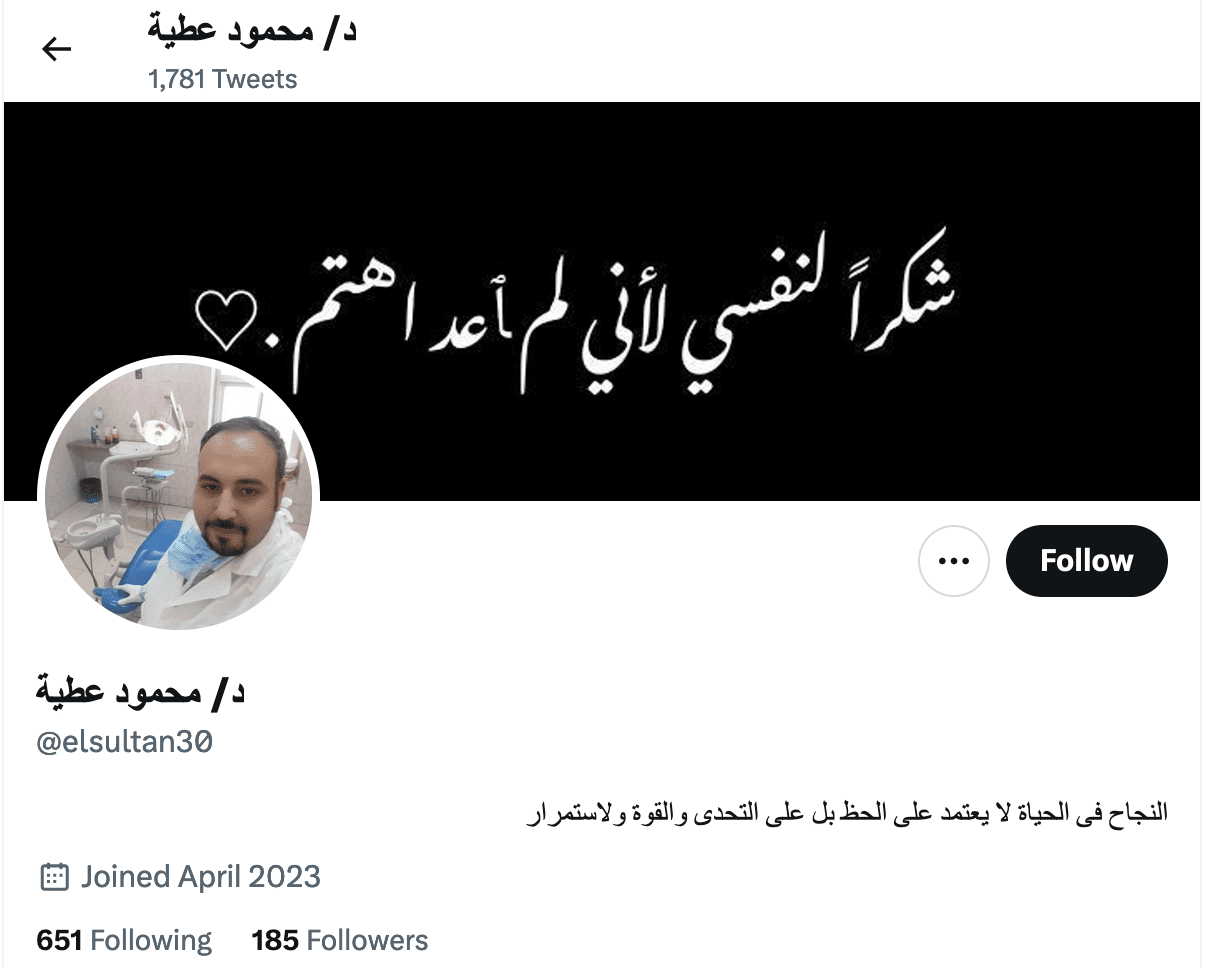
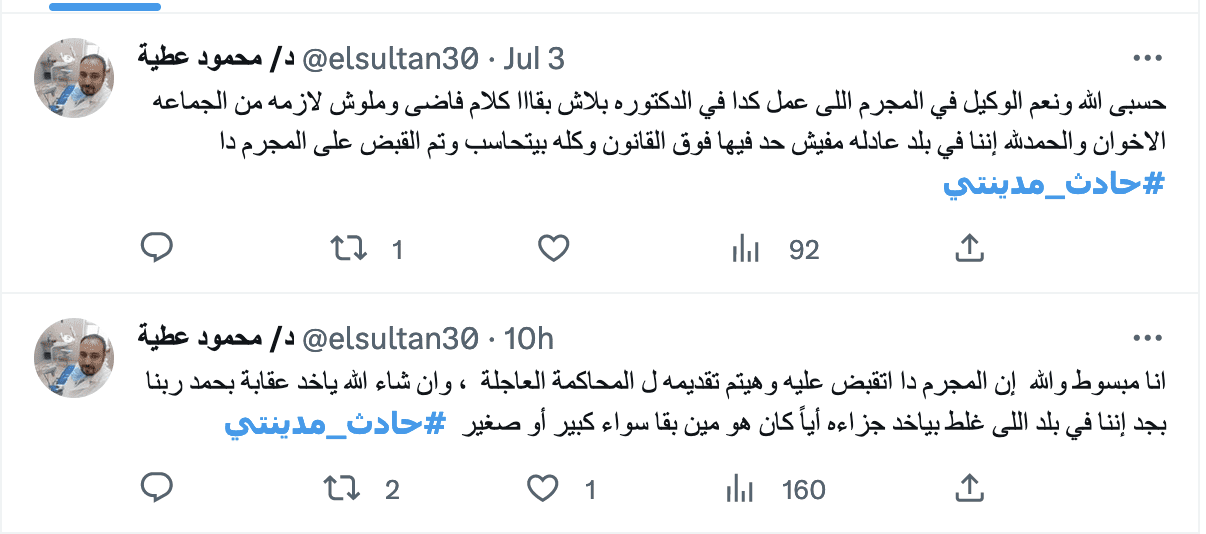
The following images show the participation rate of each account from the battalions in retweeting or tweeting with the hashtag. The numbers show that some accounts engage in fake interactions, reaching up to 60 interactions between tweets and retweets of the same media messages.
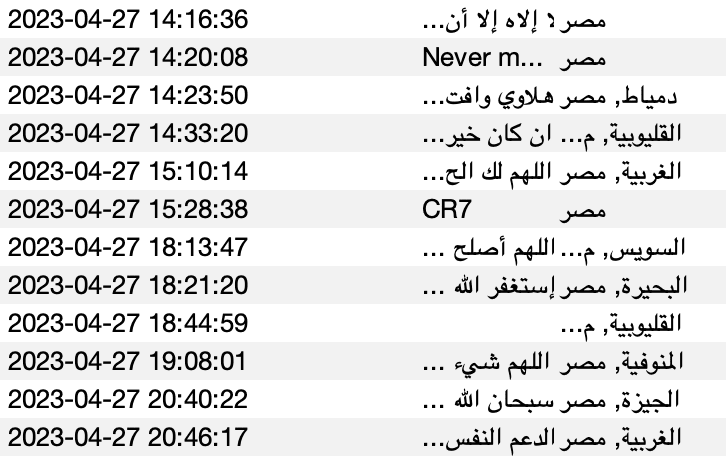

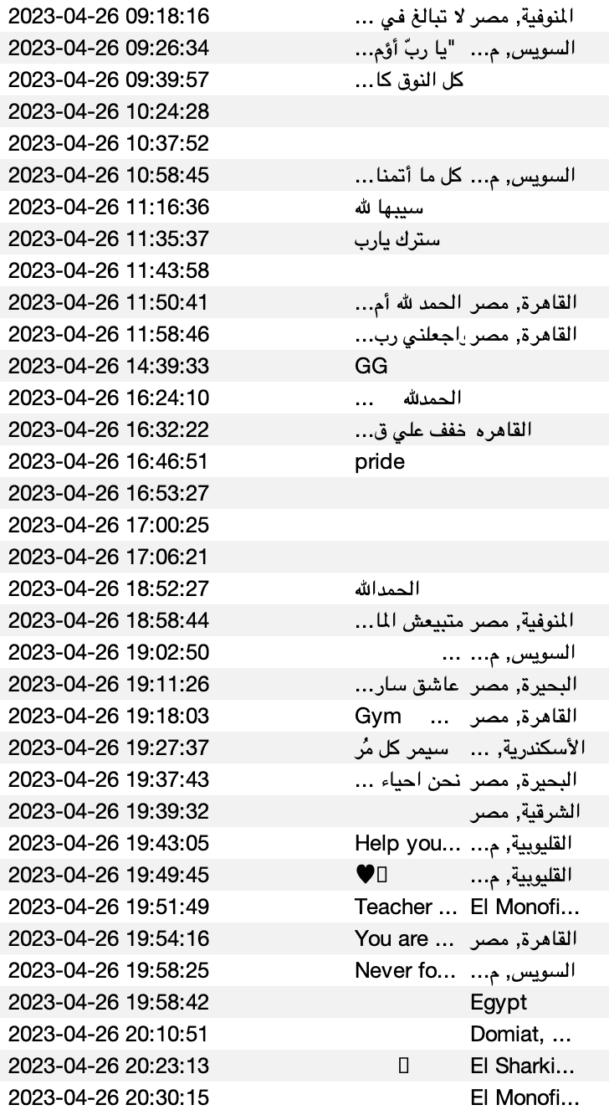
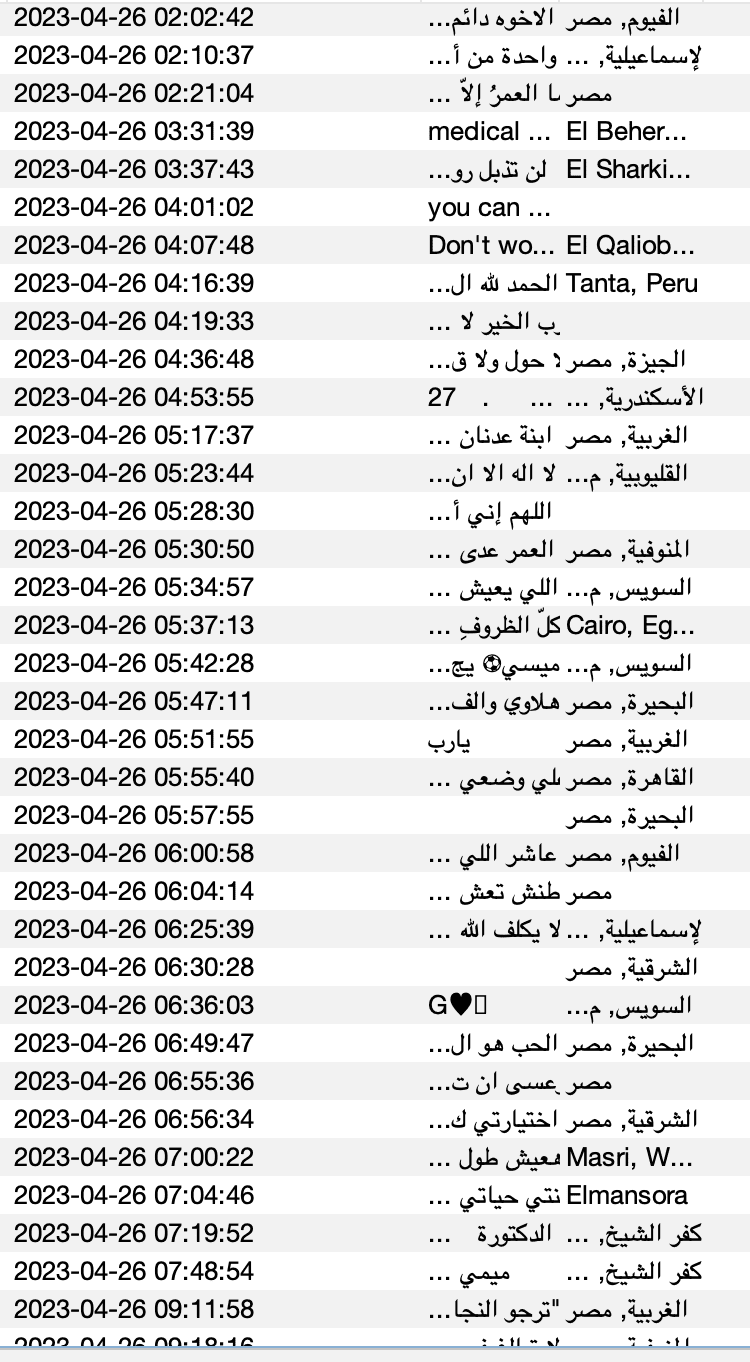
The previous analysis suggests the presence of a targeted campaign supporting the state media narrative, which could be summed up in the phrase “one is above the law." This campaign is adopted by a network of accounts that were created earlier, implying their use in other activities and the possibility of summoning them during heated discussions on Twitter.







